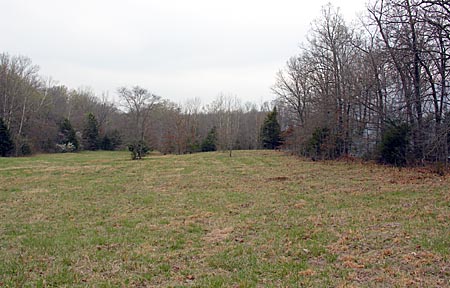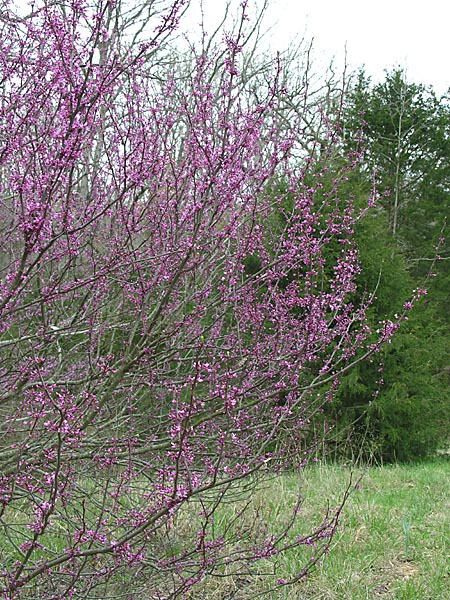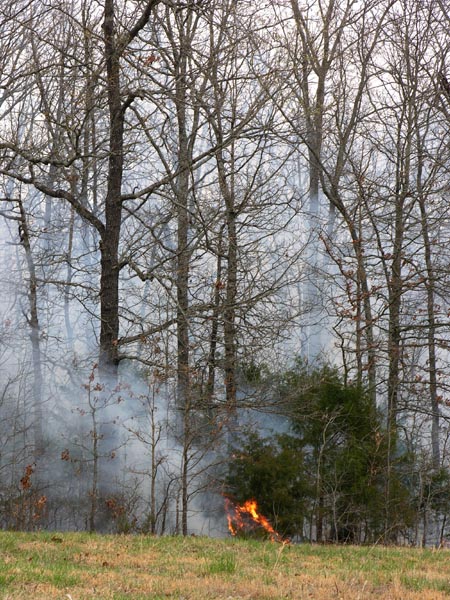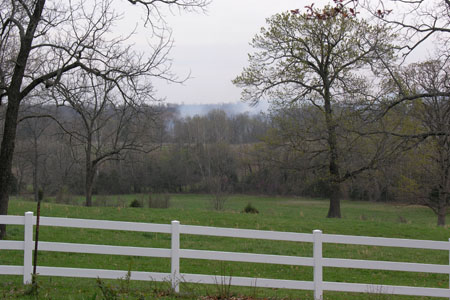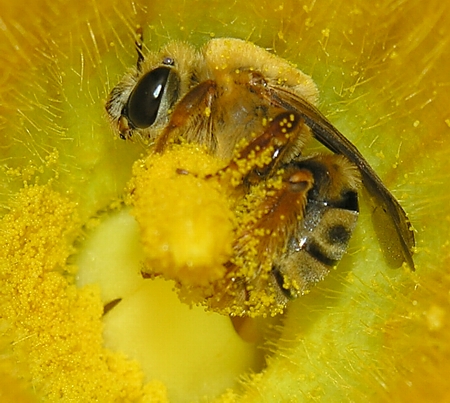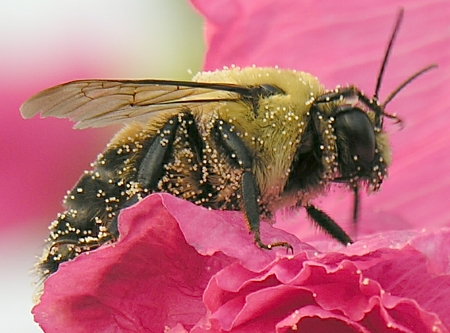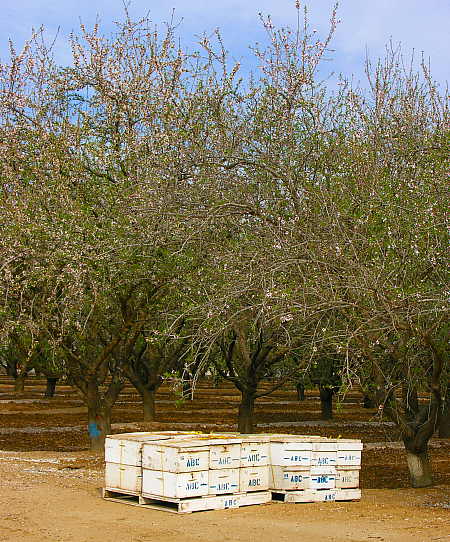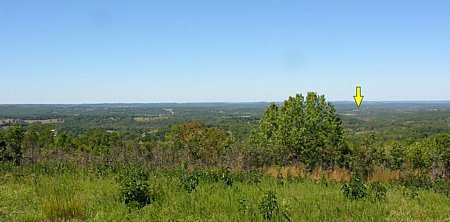
When gazing off toward the western horizon from the vantage point offered by our mountaintop (talk about making a mountain out of a molehill!), my eyes will usually come to rest at the location that is beneath the yellow arrow in the photograph displayed above.
Can you see what it is that I feel compelled to look at?
No? It’s only 4.2 miles away, as the crow flies (which raises the question -what’s with that saying? The crows I see around here never fly directly from one spot to another. But I digress).
OK, OK. I’ll show you a picture taken from the same spot, but at an earlier date and zoomed in to a larger magnification this time:
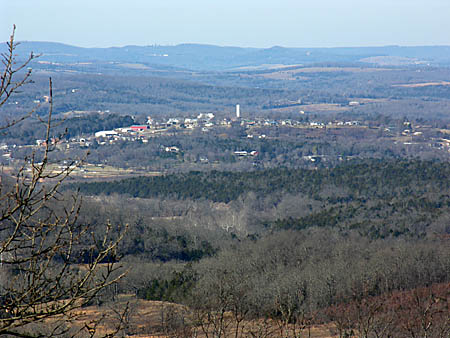
 Now you can see what is underneath the yellow arrow in the first photograph. It is the town closest to our land, with a population of approximately 270 people. It takes about 10 minutes to drive over to this little town from our house. By contrast, it takes about 35 minutes to drive to the “city” closest to us (pop. 11,000+).
What might you find in our little town? At one end sits a full-fledged post office facility, located next to a bank, where you can conduct some of your business. Around the curve there are two diners, one of which serves only breakfast and lunch (their pies would probably win many county fair competitions).
Across the street are a couple of flea market type shops, perhaps with a rusty old 1949 Farmall C tractor in need of some TLC sitting out front. There is a barber shop, a pizza shop, and a grassy parkway containing a small covered bandstand (donated and built by local volunteers). The City Hall is located here, and it is open for business one day per week (I think on Mondays, but you might want to call ahead to be certain) .
The local telephone company maintains a small substation/maintenance office in town, and our volunteer fire department is housed in a nice facility in the center of town. Further down the road, you will come to the town park, which is located next to the local Saddle Club facility, which includes a lighted riding arena, spectator stands, concession stand, and other equestrian facilities. Who knows, maybe your neighbor might just be crowned Little Miss Rodeo Queen?
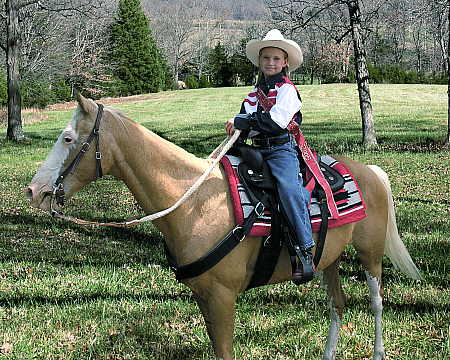
As you continue down the road, you pass a couple of small businesses, including a new fitness center (a fitness center in a town of 270?)
The far end of town is where the local school district operates their only educational facility, serving grades K-12. The district is tiny, with a total enrollment of 427 students in 2005. Along the roadsides leading into town from both directions are the numerous churches which dot the landscape.
Now, finally, after all this lengthy babbling on about this little town, I get to the subject of this post, which is about where the true heart of this little community seems to centered.
Do you think that the heart of the community (H of C) resides at the school grounds?  After all, the school has athletic fields, a multi-purpose room, a new gymnasium, and is the place to be seen Friday nights during football season. I don’t think so, because there are many empty-nesters and childless residents in the area. They aren’t likely to be seen at school sponsored activities.
What about the churches? Surely churches play a large part in the role of H of C out here, don’t they? Well, yes and no. Undoubtedly, a church provides a central role in the lives of area residents, especially in a bible belt region such as the Ozarks. But because there are so many churches dispersed around this little town, each one only services a small fraction of the total population. While serving an important function in the community, no single congregation can legitimately claim to be the H of C of this little town.
The Saddle Club, which hosts numerous events throughout the year, and is host to a great weekly “Family Fun” night during the warmer months, only serves the needs of the local equestrian community. If you aren’t a horse person, you would have no reason to frequent this facility.
How about the local diners? Doesn’t everybody eat out from time to time? Couldn’t these places thus serve as the H of C? Maybe, except that one diner is only open through lunchtime (the one with the great pies), and has a small dining room, thus could never serve as a crossroads for the town.  And the remaining diner, while providing a decent meal, is somewhat pricey for this neck of the woods, thereby limiting it’s potential to be the popular spot an H of C must be.
Rather than continuing to eliminate one candidate after another in my quest to arrive at the true heart of the community, I will cut to the chase and present my nomination:
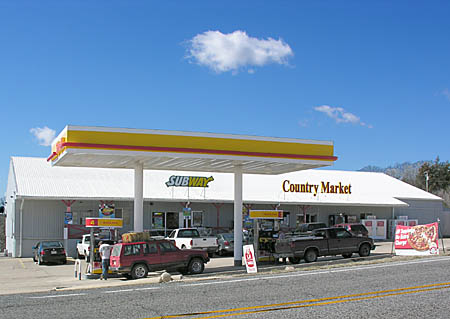
The Country Market. Every small town aught to have a place like this in it’s midst. More than just a spot where you can fill up the tank with gasoline or diesel fuel, you can also replenish your propane tanks and pump kerosene for your shop heater in the winter.
Do you need groceries? This little store is amazing in the selection of goods that are offered. From fresh produce to meats and dairy, canned and frozen goods to spices and ice cream, it seems to have most of the things you might happen to need between trips to the city for larger-scale shopping.
Are you hungry now? This little place is a franchise for Hunt Brothers Pizza – 2 pizzas, $12.99, all toppings included. It also sells Chester’s Fried Chicken, which is excellent (if nothing else, you can trust an Ozarker to know good fried chicken). The lunch counter will fix you up with a burger and fries, catfish, and other items that vary from day to day.  If your preference is for something a little healthier, there is a Subway franchise located within the store also. To help alleviate your sweet tooth, you can purchase Krispy Kreme dough nuts (provided they haven’t sold out of the day’s supply).
Have you come to the area to try your hand at some of the superb fishing that Bull Shoals Lake provides? The Country Market can outfit you with fishing tackle, as well as bait and license. With over 1000 miles of shoreline (that’s right, one thousand), there are plenty of opportunities for camping. The Country Market has you covered as well. Propane, charcoal, white gas, and miscellaneous camping supplies are sold here to replenish your supplies.
With all that this store offers, it is not surprising that everybody who lives anywhere near this town utilizes the Country Market on a regular basis. It is the one spot in town that is regularly in touch with the pulse of the community. Want to know who’s in town or out? Ask at the market. Is Betty recuperating well from her surgery? Are there any farms for sale up the road? Did you hear about the Smith’s new grandchild? There isn’t anything you can’t find out about at the Country Market, if you just hang out long enough!
Therefore, considering the arguments presented, I offer the Country Market as my pick for the Heart of the Community designation.
Anyone disagree?



